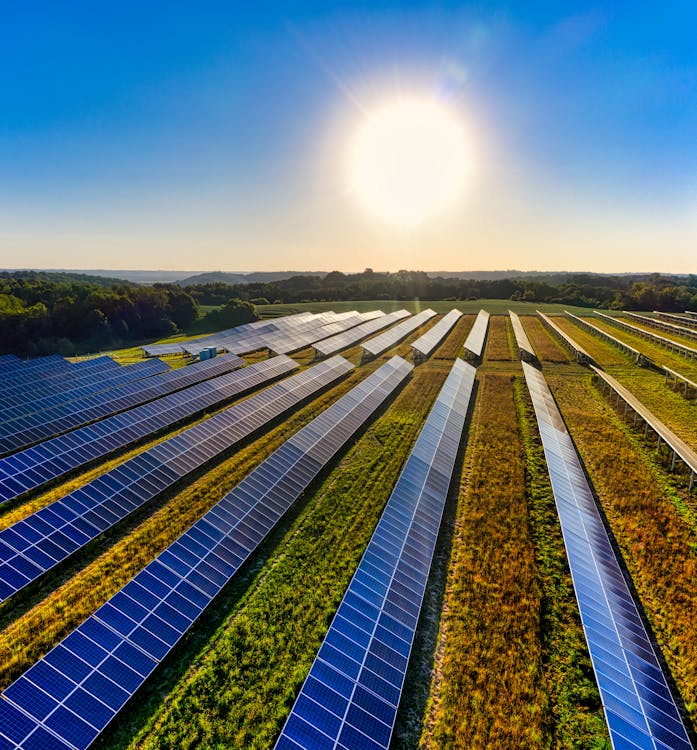Solar Panel Installation Pennsylvania Things To Know Before You Get This
Solar Panel Installation Pennsylvania Things To Know Before You Get This
Blog Article
Solar Panel Consultation PA: Our Firm Concentrates On The Installation And Management Of Photovoltaic Energy Systems
History and Development of Solar Panel Companies
The inception of photovoltaic panel companies can be traced back to the 1800s when Alexandre Edmond Becquerel discovered the photovoltaic result. Would he have thought of how his discovery would revolutionize the way we harness energy?
Early Beginnings

In 1954, Bell Labs developed the first practical photovoltaic cell. This marked a substantial milestone in the history of solar energy. They were at first utilized to power area satellites, but who understood this was just the start?
Evolution and Growth
- In the 1970s, an energy crisis led to increased interest in renewable resource sources, consisting of solar energy.
- By the 1990s, developments in technology and increasing ecological awareness led to the development of photovoltaic panel companies internationally.
A New Age
As we went into the 21st century, the solar industry witnessed a rapid growth. The demand for clean and sustainable energy caused a new age in the photovoltaic panel market.
Remarkable Realities
- The world's first solar energy station was constructed in 1982 in Hisperia, California.
- By 2019, solar energy had actually become the world's fastest-growing source of power.
Indeed, the journey of solar panel business has been remarkable, hasn't it? The future holds enormous potential, with continuous improvements leading the way for a sustainable future. Can we envision a world powered totally by solar energy?
Progressing
Today, photovoltaic panel business continue to innovate, pursuing more effective and economical options. The development of solar power has actually come a long way, and yet, the journey has actually just started.
The Core of Photovoltaic Panel Production
Ever wonder what goes into developing those glossy, sun-loving photovoltaic panels? The procedure is as remarkable as completion product (Top Rated Solar Installers PA). High-purity silicon, the main ingredient in photovoltaic panels, goes through different changes to ensure its efficiency and resilience
From Sand to Silicon
Crystalline silicon, the backbone of many solar panels, stems from basic sand. It's a fascinating journey, isn't it? The sand goes through a high-temperature reaction with carbon to form silicon. This isn't just any silicon. The silicon utilized in solar panels is "solar-grade," with a purity of 99.9999%. It's this pureness that enables the panels to effectively convert sunlight into power.
Ingot Development
When the silicon is pure enough, it's time to form ingots. Photo a big, cylindrical block of solid silicon. How is this attained? Through a process called Czochralski procedure, where the silicon is melted and after that gradually recrystallized. It's a sluggish dance of science, leading to a solid product that is practically as pure as the raw silicon itself.
Slicing into Wafers
The ingots are then sliced into wafer-thin pieces, like slicing a loaf of bread. Each slice is a potential solar cell, waiting to harness the power of the sun. Did you understand that the silicon wafers are only about 200 micrometers thick? That's about half the density of a human hair! The process needs accuracy and persistence, but the result is a set of wafers ready to be developed into solar cells.
Creating Solar Cells
With the wafer ready, it's time for the magic to occur. The silicon wafer is 'doped' with other components like phosphorous and boron to create an internal electric field. It's this field that allows the conversion of sunlight into electricity. Complex, isn't it?
Assembly and Quality Assurance
Solar cells are like puzzle pieces that come together to form a solar panel. The cells are soldered together in a grid-like pattern, then covered with website a protective layer of glass. The last step involves rigorous quality assurance checks. It's important that every solar panel performs at its peak, wouldn't you concur?
Expert Pointer
Always keep in mind that even the most efficiently made photovoltaic panel can lose performance due to dirt and debris accumulation. Routine cleansing can considerably enhance your panels' efficiency.
Comprehending the Ecological Impact of Photovoltaic Panel Companies
Ever pondered the ecological footprint of a solar panel company? Green technology, such as solar, has transformed our energy landscape, however what about the behind-the-scenes effect?
The Manufacturing Process: A Double-Edged Sword
The production procedure for solar panels requires a significant amount of energy. This process, understood as 'em bodied energy', can be seen as a type of 'energy financial obligation'. It's a little like borrowing today's sunlight to power tomorrow's energy needs. But fret not, the energy payback time is frequently shorter than you 'd think!
- The energy payback duration for solar panels is typically 1-4 years.
- After this duration, the energy produced is essentially carbon-free.

Life After Decommission
And what takes place when a solar panel reaches completion of its lifespan? Can it just be tossed into the garbage? No, that would not be very green, now, would it?
A viable solution is recycling. While solar panel recycling is still in its infancy, it holds a world of potential. Recycling not only keeps materials out of landfills however likewise reduces the requirement for brand-new raw materials.
Accountable Sourcing: More Than A Buzzword
Where does the silicon originated from, you ask? The industry's demand for silicon and rare minerals can lead to destructive mining practices. Accountable sourcing is therefore essential to reduce harmful environmental impacts.
Decreased Carbon Emissions: The Bigger Picture
Let's not forget the bigger image: solar power significantly minimizes carbon emissions. As soon as set up, photovoltaic panels generate clean, renewable resource, offsetting their initial production footprint.
In brief, the environmental effect of photovoltaic panel companies is a complicated concern. With responsible practices, the promise of a cleaner, greener future is well within our grasp.
Financial Performance and Market Share of Photovoltaic Panel Companies
Ever wondered why some solar panel companies - Affordable Solar Panels PA outperform others in the market? What sets them apart? The key lies in their monetary efficiency and market share
Financial Efficiency: A Vital Indication
Financial efficiency plays an essential function in the success of any business. For photovoltaic panel companies, it's no different. Strong monetary efficiency makes it possible for these companies to buy innovative innovation, research study, and advancement, therefore creating high-quality, effective solar panels.
But how do they accomplish this? With a concentrate on expense performance and strategic investments. Companies that handle to minimize production expenses without compromising on quality tend to fare much better in the market.
Market Share: A Measure of Success
Market share, on the other hand, is a direct reflection of a company's appeal among consumers. A high market share suggests more property owners are picking their photovoltaic panels over rivals.
What's the secret recipe for gaining a larger market share? It comes down to consumer complete satisfaction and brand track record. Companies that prioritize consumer requirements and preserve a positive brand name image are more likely to record a bigger share of the marketplace.
- Consumer Fulfillment: Solar panel business that deliver trustworthy items and remarkable client service tend to have higher client complete satisfaction rates.
- Brand name Credibility: A strong brand name reputation is constructed in time through consistent shipment of quality product or services.
Financial Efficiency and Market Share: The Cooperative Relationship
Interestingly, the relationship between financial performance and market share is not one-sided. They feed off each other. A strong monetary efficiency can increase a business's market share, while a high market share can enhance monetary efficiency.
As a solar panel business, balancing these two elements is important for long-term success. A company that disregards either of them might find it difficult to preserve its position in the competitive solar industry.
The Takeaway
What does all this mean for you? Whether you're a homeowner wanting to install solar panels or a financier considering the solar industry, comprehending the monetary performance and market share of photovoltaic panel companies is essential. They are essential indications of a business's health and capacity for future development.
Report this page